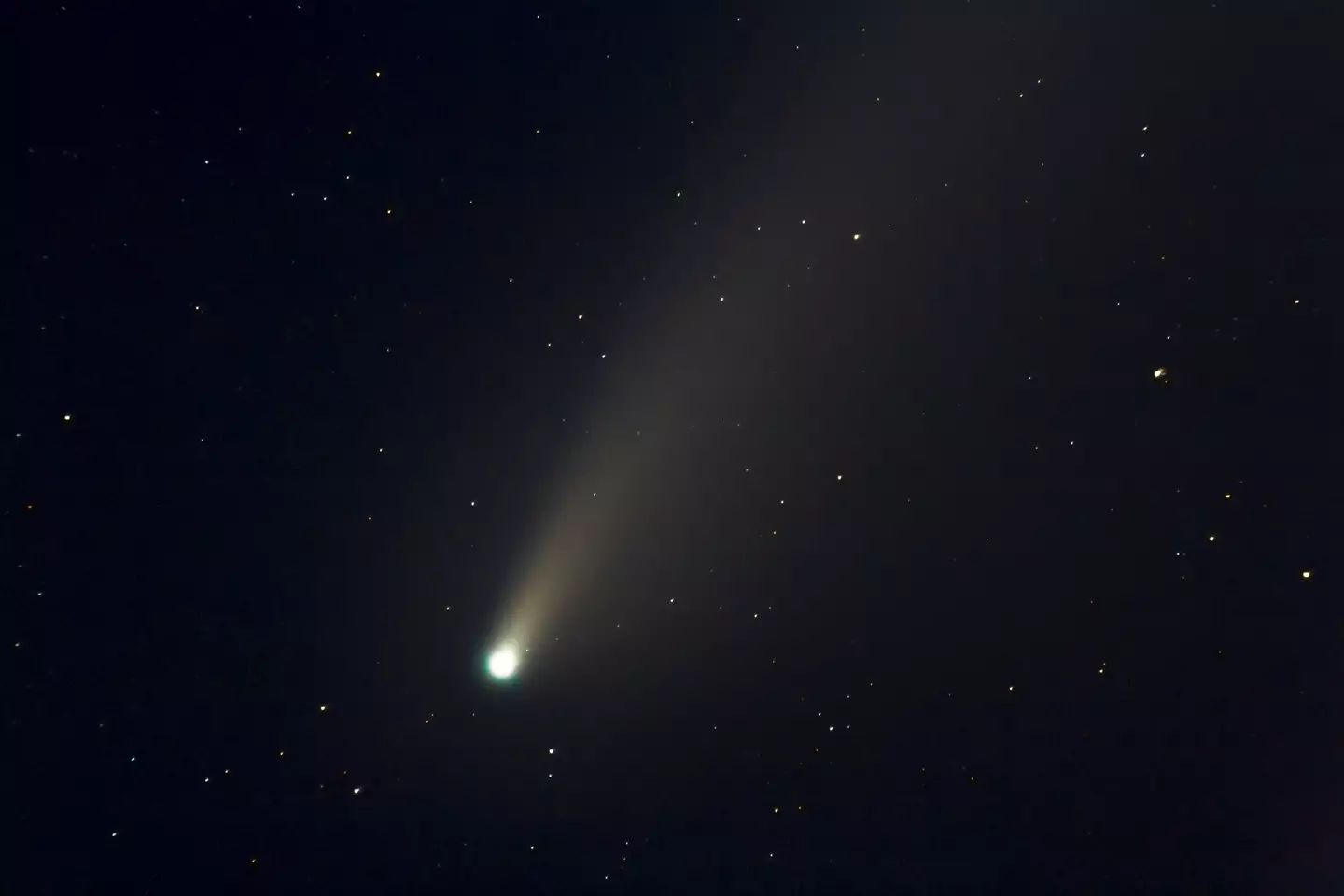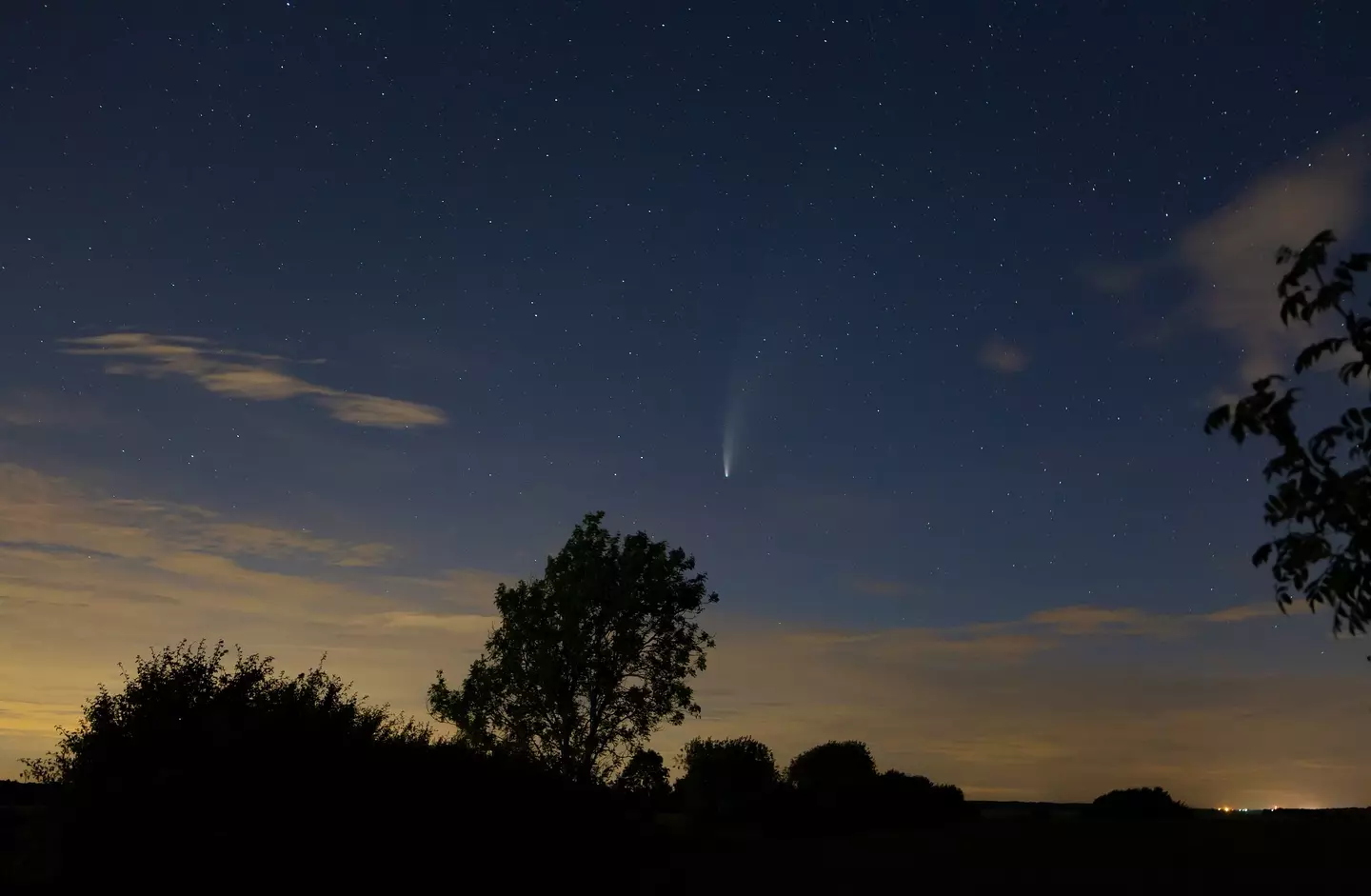
A comet being described as a "cosmic snowball" will pass by Earth next year for the first time in 50,000 years.
The remarkable sight hasn't been seen since Neanderthals walked the planet, and astronomers are getting hugely excited for the unique comet to be seen again.

The comet known as C/2022 E3 (ZTF) will make its closest approach to Earth on 1 February, 2023, nearly 12 months on from when scientists first discovered its existence.
Advert
Astronomers first spotted the comet's brighter greenish coma and a yellowy dust tail in March 2022, using a wide-field survey camera at the Zwicky Transient Facility.
At the moment, the comet is currently 117 million miles from Earth and it still has quite a journey to make before it will be at its brightest on 1 February.
The comet needs to reach the Sun, loop around and then head back past our planet.

Advert
And for anyone keen to try and spot it in the sky, it could become visible when its roughly 26 million miles away, with its magnitude predicted to be +6.
Astronomers believe this comet might be the first one seen by the naked eye since the NEOWISE comet two years ago in July 2020.
But while the NEOWISE comet left a long, misty tail in the sky, this comet is most likely to appear as a grey streak across the night sky.
It may be even possible to view it as early as January 26, but will be brighter and easier to see by 1 February.
Advert
The comet may also remain visible into the second week of February, but astronomers have predicted that by April, it will be close to the Sun in the sky and be significantly fainter, so will be very hard to find even with a telescope.

Tania de Sales Marques, an astronomer at the Royal Observatory Greenwich in the United Kingdom, told Newsweek: "It's notoriously hard to predict the brightness of comets, however, sky watchers everywhere have been keeping track of Comet C/2022 E3 (ZTF) since it was discovered in March 2022, and the current prediction is that it might reach magnitude +6—the limit of what the naked eye can see—or even slightly brighter when it's at its closest approach to the Earth on the 1st of February."
She added: "It's traveling in the general direction of Polaris, the North Star, where we'll be able to find it in early February. By then, it should be visible throughout the night."
Advert

Robert Massey, deputy executive director of the U.K. Royal Astronomical Society, told keen comet gazers how to best see the comet E3. He recommended looking on a clear night from a dark site as the comet won't be the easiest object to find.
Also speaking to Newsweek, he advised: "Binoculars are ideal for beginners trying to find a comet as they're easy to use, whereas a telescope has a much smaller field of view. If you can see it with binoculars then try with your naked eye."
Seeing as the comet won't be back again for another 50,000 years, this might be one of those once-in-a-lifetime chances to catch it, so best get your binoculars ready!
Topics: Science, World News
